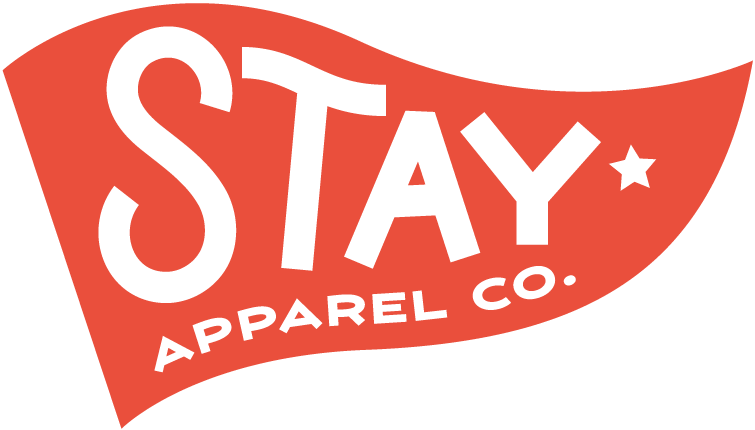Greetings from Stay's new vintage section, featuring classic Curt Teich postcards
Curt Teich imported the ‘Greetings From’ concept to the United States from his native Germany in 1904.
Curt Teich imported the ‘Greetings From’ concept to the United States from his native Germany in 1904.
The textured linen postcards already were vintage when I bought them in the 1990s at the York County Heritage Trust museum store in downtown York, Pa.
The colorful, optimistic postcards featured York’s business district on one; York County National Bank, court house and Hotel Yorktowne on another; and a bird’s eye view from Reservoir Park south of the city on a third.
I’ve carried those postcards with me through subsequent moves, ostensibly with the intention of framing them one day.
They came to mind recently as we added a vintage section to stayapparel.com, offering classic pennants and postcards.
Most of those postcards, like the York ones I bought so long ago, were produced by the legendary Curt Teich & Co. of Chicago, which at one time was the largest maker of postcards in the world, employing more than 1,000 people and producing more than 1 million postcards daily.
Stay initially is offering a small selection of Curt Teich postcards consistent with the communities we feature on our shirts: Hershey, Harrisburg, York, Lancaster. A customer purchased five vintage Harrisburg postcards, pairing them with our Harrisburg Tee (itself reminiscent of a vintage postcard) as a birthday gift for her boyfriend.
P5_YorkPostOffice_F.jpg
‘How America saw itself’
Teich, born in Germany to a family of printers and publishers, immigrated to the United States in 1895 and started Curt Teich & Co. three years later. The company operated until 1978, after which the Teich family donated the company’s archives to the Lake County Discovery Museum in Illinois. The archives later transferred to the Newberry Library in Chicago.
I’m planning to get my hands on a book about Teich called, “The Imaging of a Nation — 1931-1950,” by Jeffrey Meikle. In the meantime, I found a couple of great articles posted to the Made in Chicago Museum and Smithsonian Magazine websites.
The former article contends:
“Curt Otto Teich was neither famous nor an ‘artist’ — per se — but his contributions to America’s modern self-image arguably land right at the confluence of Norman Rockwell and Andy Warhol.”
Katherine Hamilton-Smith, who presided over the Teich postcard archives at the Lake County Discovery Museum, called it “an un-curated collection” in that Teich never said no to a job.
“There was nobody saying, ‘Well, I like that, but I don’t like that.’ If a job came in the door, they printed it. And so, it is America curating itself, in a sense. [Teich postcards] reveal how America saw itself in the 20th century.”
P6_HersheyPoolsStadiums_F..JPG
The Teich team seemingly was everywhere. The Teich archives on the Newberry Library website can be searched geographically, revealing far-reaching Pennsylvania postcards from Analomink and Armagh to Youngwood and Zelionople.
‘Boosterism of place’
“No town was too small for a Teich sales agent to pay it a visit, and no visit was ever fruitless enough not to warrant a return,” according to the Made in Chicago Museum. “Beyond meeting regularly with the photographers in said region, there would be regular glad-handing with local business and restaurant owners, town councils, club members, etc. — anyone who might have a place in mind for colorful cardboard immortalization. By supplying ‘made-to-order’ postcards tied to small-town civic pride, Teich somewhat inadvertently began documenting both the extraordinary and the mundane corners of American life.
“ ‘Some of these views wouldn’t otherwise exist for us today, because they weren’t special in any way,’ says Kathy Hamilton-Smith. ‘It is a form of boosterism of place as place changed in the 20th century. So the un-specialness of picture postcards in these early decades is what makes them so special in my mind.’
But un-special shouldn’t be mistaken for lack of attention to detail. The museum article shows the evolution of a 1951 postcard design for a cafe in Sioux Falls, S.D., starting with a black-and-white photo. Handwritten instructions on the back direct the artist on colors to use for the ceiling and floor and to “remove” a man by the door wearing overalls.
I noticed similar discretion in a postcard featuring the exterior of Hersheypark Arena, which was built adjacent to Hershey, Pa.’s original ice rink, the Ice Palace. Both buildings still stand in 2021, but on the postcard the Ice Palace isn’t visible.
From the Smithsonian Magazine:
“Teich believed that no town was too small for its local attractions to be made more beautiful by his art department’s color processes. Linen postcards advertised motels and motor courts with clean rooms and radios. Roadside eateries’ cards showed off delicacies: fried clams at Howard Johnson’s restaurants on the East Coast; shoo-fly pie at the Dutch Haven in Lancaster, Pennsylvania; all-you-can-eat chicken dinners at Zehnder’s Restaurant in Frankenmuth, Michigan.”
Picture postcards weren’t created by Teich, according to Smithsonian Magazine, having “emerged in France, Great Britain, Germany, and Japan in the early 1870s and had quickly become very popular.
“But the linen-type postcards Teich (and eventually his imitators) produced were distinctly American, rendered in an opulent style, depicting wonders from the corner luncheonette to Niagara Falls. Teich’s offset printing technique lavished cards in saturated colors and used airbrushing and other effects to reduce unwanted details. The visual result was a fantastical—and enticing—view of America. Postcard images of sun-dappled, sinuous roads captured the spirit and adventure of road travel.”
The linen-style postcards “captured the spirit of hope and optimism Americans craved during the Great Depression and World War II—and found during the post-war years.”
We have lots of work to do to restore a sense of hope and optimism in 21st-century America. Fortunate for us, vintage Curt Teich postcards provide one road map.



